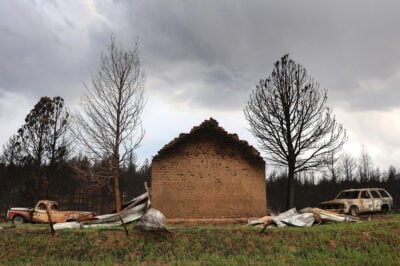ProPublica is a nonprofit newsroom that investigates abuses of power. Sign up to receive our biggest stories as soon as they’re published.
President Donald Trump is under fire for his reluctance to use the Defense Production Act, a 70-year-old law that empowers the president to order private industry to produce crucial equipment and supplies in an emergency.
But the law may not be the silver bullet its proponents are hoping for to combat the COVID-19 pandemic: It comes with a war chest of only $228 million, with another $1 billion to come assuming the latest rescue legislation passes.
That $228 million is the available balance in the Defense Production Act Fund as of Oct. 1, according to the latest White House budget report. The fund is the designated vehicle for the government to obtain needed supplies from private companies though loans, subsidies or purchases, according to a Congressional Research Service report this month.
As part of a deal reached overnight, the stimulus package will include $1 billion for the Defense Production Act, according to a summary released by Sen. Patrick Leahy, the ranking Democrat on the Appropriations Committee. “This funding allows the Department of Defense to invest in manufacturing capabilities that are key to increasing the production rate of personal protective equipment and medical equipment to meet the demand of healthcare workers all across the nation,” Leahy’s summary said.
The White House and Treasury Department didn’t respond to requests for comment.
The $1 billion influx is less than a previous proposal from House Democrats, who floated the idea of adding $500 million to the fund and authorizing an additional $3 billion. The version of the stimulus bill proposed by Senate Majority Leader Mitch McConnell had no funding for the Defense Production Act. McConnell’s bill failed to advance last week, prompting marathon negotiations that led to the latest deal.
All of those figures are drops in the bucket amid a pandemic response where figures are measured in the billions or trillions. For example, Trump’s national emergency declaration under the Stafford Act unlocked a disaster-relief fund of up to $50 billion.
The existing $228 million in funding is enough to buy about 9,000 ventilators, based on the low-end cost for the type of device used in intensive care units, according to Medtronic, one of the top manufacturers. New York Gov. Andrew Cuomo said Tuesday that his state alone needs 30,000 of the breathing machines to deal with the onslaught of coronavirus patients.
Even without more designated funds, the administration could still use its powers under the Defense Production Act to prioritize other government contracts. The Federal Emergency Management Agency used this authority to expedite contracts for housing, food, water and electricity in Puerto Rico in the aftermath of Hurricane Maria.
On Tuesday, FEMA administrator Peter Gaynor said the disaster response agency would now use the law to obtain coronavirus test kits and was also putting “DPA language” into contracts for 500 million protective masks. By the end of the day, however, the agency backtracked, saying the law wouldn’t be used after all because the test kits were found on the private market.
The reversal came after Trump spoke at an evening White House press conference, saying the Defense Production Act wasn’t needed. Even though Trump formally invoked the law in an executive order last week, he and some of his advisers have been loath to deploy it, under pressure from the Chamber of Commerce and business leaders, The New York Times reported. “We’re a country not based on nationalizing our business,” Trump said at a briefing.
The law is no panacea, added the Chamber of Commerce. “The Defense Production Act isn’t a magic wand to immediately solving medical supply shortages,” Neil Bradley, the chamber’s chief policy officer, told The Wall Street Journal. “It can’t produce highly specialized manufacturing equipment overnight.”
Trump’s position is at odds with pleas from governors, lawmakers and health experts. In a joint letter on Saturday, the top groups representing doctors, hospitals and nurses urged Trump to immediately use the Defense Production Act to increase supplies of protective gear and medical equipment. Rep. Andy Levin, D-Mich., was the lead signer on a letter of almost 60 lawmakers calling on Trump to use the emergency powers this month.
“Time for the DPA — all three sections,” Tom Bossert, who was Trump’s homeland security adviser, with responsibilities including pandemic response, from 2017 to 2018, tweeted on Tuesday.
The Defense Production Act is routinely used by the Pentagon to prioritize contracts and buy military hardware, according to the Congressional Research Service. In 2017, the Defense Production Act Fund supported dozens of military projects such as developing weapons and fuel systems, according to a Defense Department report. The government has not made direct loans from the fund for more than 30 years, the Congressional Research Service said.
Filed under:




